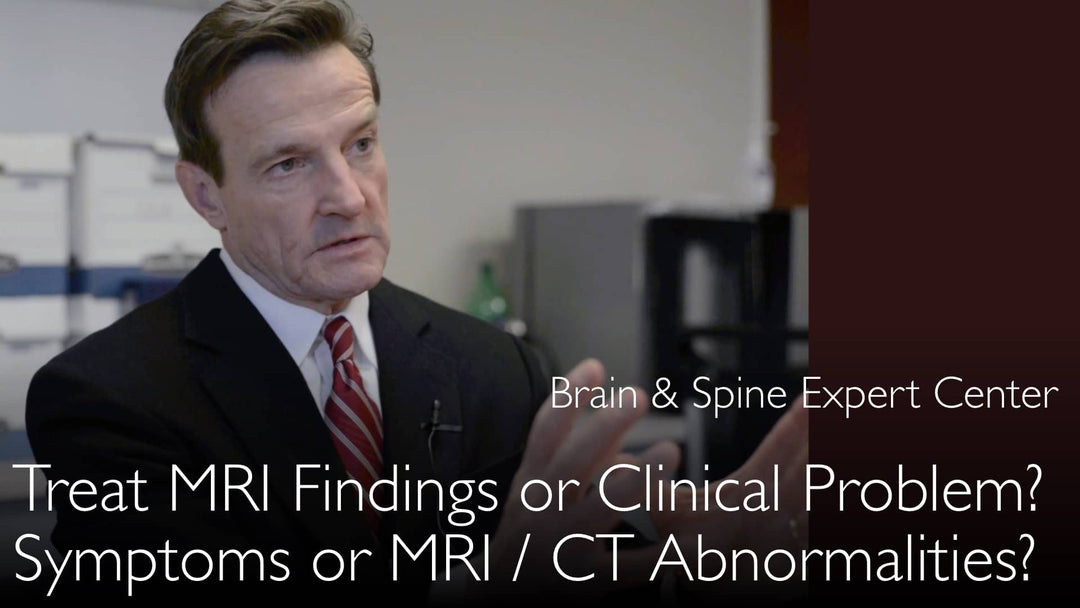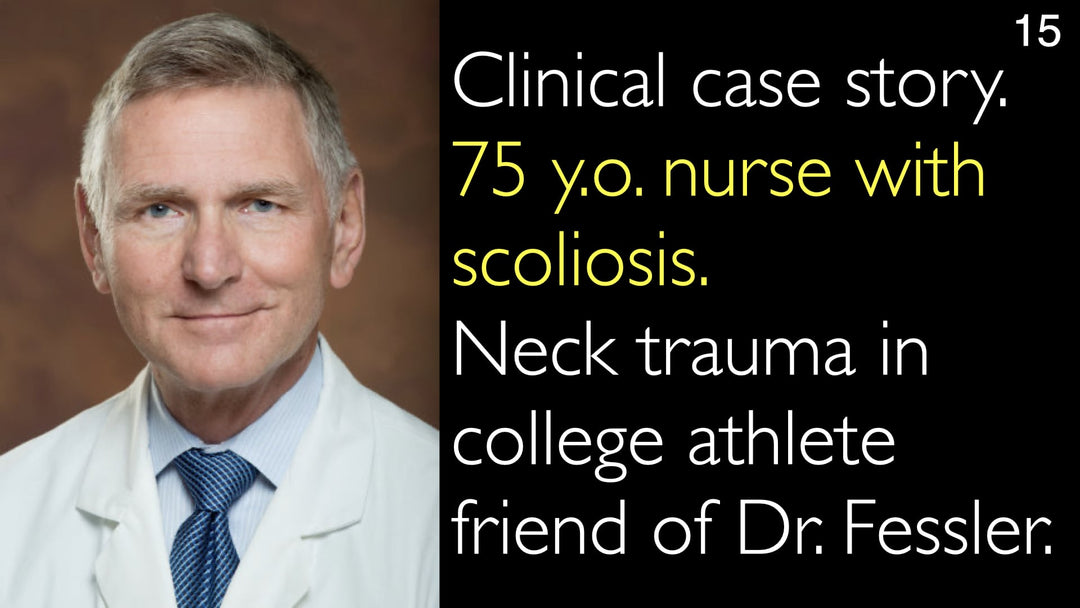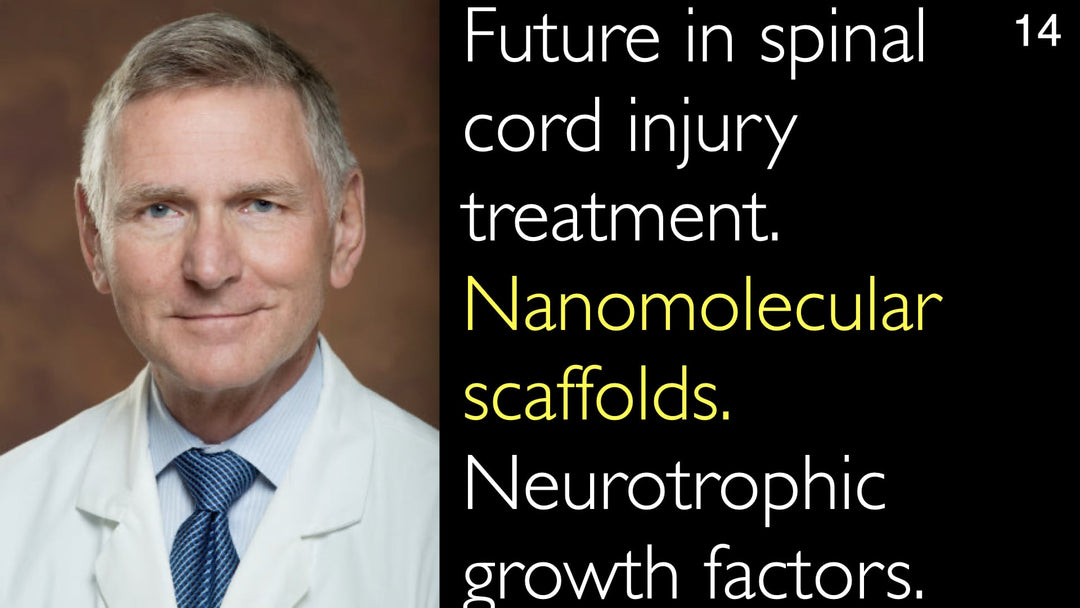Leading expert in spine surgery, Dr. Eric Woodard, MD, explains why surgeons must treat the patient, not just the MRI. Up to 40% of asymptomatic patients have spine MRI findings that could be considered surgical. Dr. Woodard details the three critical factors for surgical decision-making. These factors are clinical symptoms, radiographic evidence of compression, and failure of conservative therapy. A spine surgeon's medical second opinion is essential to correlate MRI abnormalities with a patient's actual condition.
When to Treat Back Pain: Evaluating Spine MRI Findings and Patient Symptoms
Jump To Section
- MRI Findings vs. Symptoms in Asymptomatic Patients
- The Three Criteria for Spine Surgery Consideration
- The Importance of Clinical Symptom Evaluation
- The Role of Conservative Therapy Failure
- The Value of a Surgical Second Opinion
- Understanding the Placebo Effect in Surgery
- Full Transcript
MRI Findings vs. Symptoms in Asymptomatic Patients
Spine MRI scans often reveal abnormalities in patients who experience no pain or symptoms. Dr. Eric Woodard, MD, emphasizes that radiographic findings alone should never dictate treatment. Research shows that up to 40% of asymptomatic individuals have lumbar spine MRI changes that could be misinterpreted as needing surgery.
This high percentage underscores a critical principle in spine care. Surgeons must base treatment decisions on the whole clinical picture, not isolated imaging results. Treating an MRI finding without correlating symptoms can lead to unnecessary and ineffective procedures.
The Three Criteria for Spine Surgery Consideration
Dr. Eric Woodard, MD, outlines a definitive framework for considering spine surgery. The decision is a combination of three essential factors that must all be present. First, the patient must report clinical symptoms consistent with a spine problem, such as pain from a herniated disc or spinal stenosis.
Second, the cervical or lumbar MRI must show clear evidence of nerve compression or a degenerative disease process that explains the symptoms. Third, the patient must have failed an adequate trial of initial non-surgical therapy. Dr. Eric Woodard, MD, states that surgery becomes appropriate only when these three factors collectively indicate it is superior to continuing conservative care.
The Importance of Clinical Symptom Evaluation
A thorough clinical evaluation is the cornerstone of effective spine treatment. Dr. Anton Titov, MD, discusses the importance of listening to the patient's description of their pain, weakness, or numbness. The nature, location, and severity of symptoms provide the context for interpreting any MRI findings.
Dr. Eric Woodard, MD, confirms that the patient's lived experience is the primary guide. The goal is to ensure that any treatment plan directly addresses the symptoms the patient is actually feeling, rather than an incidental finding on a scan.
The Role of Conservative Therapy Failure
An adequate trial of non-surgical treatment is a mandatory step before considering spine surgery. Conservative therapy includes physical therapy, medications, injections, and activity modification. Failure to respond to these first-line treatments is a key indicator that a more invasive intervention might be necessary.
Dr. Eric Woodard, MD, includes this as one of his three critical criteria. This step ensures that surgery is a last resort, not a first option. It protects patients from undergoing procedures that might not be needed if simpler, less risky treatments can provide relief.
The Value of a Surgical Second Opinion
Seeking a medical second opinion from an experienced spine surgeon is highly valuable. A spine surgeon provides a different perspective than a radiologist, focusing on the correlation between imaging and clinical presentation. Dr. Anton Titov, MD, advises patients to ask a surgeon directly, "Will you treat my MRI or treat me?"
Dr. Eric Woodard, MD, as a former Chief of Spine Surgery, embodies the expertise needed for this nuanced evaluation. A second opinion confirms a diagnosis and ensures the treatment plan is tailored to the patient, not just their scan results. This process builds patient confidence in their chosen path forward.
Understanding the Placebo Effect in Surgery
The powerful influence of the placebo effect must be acknowledged in surgical outcomes. Dr. Anton Titov, MD, references a famous study where patients who received a sham knee surgery reported similar satisfaction to those who received the actual procedure. This phenomenon highlights that the belief in treatment can itself be therapeutic.
Dr. Eric Woodard, MD, agrees that the placebo effect is a real and powerful force. This understanding reinforces why surgery must be reserved for cases with clear objective indicators. It prevents performing operations that might work primarily through a patient's belief in the procedure rather than its mechanical correction.
Full Transcript
Dr. Anton Titov, MD: Spine MRI medical second opinion: treat MRI or patient? Up to 40% of asymptomatic patients have changes on spine MRI images that can be considered "surgical," yet they have no signs or symptoms of vertebral column disease.
Spine MRI abnormality requires medical second opinion by an experienced spine surgeon. Do not get just a medical second opinion by an MRI specialist.
A leading spine surgeon discusses why it is important to evaluate spine MRI findings together with patient's symptoms and with results of clinical examination.
Spine MRI medical second opinion: treat MRI or patient? Medical second opinion confirms that degenerative disc disease or spinal stenosis diagnosis is correct and complete.
Medical second opinion also helps to choose the best treatment for slipped disk problem and spinal stenosis. Any abnormality requires spine MRI medical second opinion.
Should surgeon treat MRI or patient? Seek medical second opinion on back pain and be confident that your treatment is the best.
40 percent of asymptomatic patients have MRI findings that can be interpreted as indication for surgery. It is important to treat patient, not just MRI radiographic finding.
Only experienced surgeon can provide a spine MRI medical second opinion. Spine surgeon must decide whether to treat MRI or patient.
Surgery can be considered when all three factors are true. #1: patient has the clinical symptoms of spine problem slipped disc herniation, spinal stenosis, persistent back pain.
#2: back lumbar MRI or neck MRI shows compression of spinal cord or degenerative disease process. #3: Patient did not respond to initial non-surgical therapy.
MRI findings should not be treated in isolation. Patient's symptoms should be considered together with MRI findings.
Medical second opinion of spine surgeon is preferred to medical second opinion of radiologist. Patients seek spine MRI medical second opinion too little.
They should ask a spine surgeon: do you treat MRI or patient? Abnormal lumbar MRI medical second opinion. Abnormal cervical spine MRI medical second opinion.
The old surgical adage says: do not treat the radiographic findings—treat the patient. Many patients have certain cervical disease on MRI but nevertheless would experience some limited symptoms.
How do you decide in your practice whether to proceed to surgical treatment or to keep treating patient conservatively?
Dr. Eric Woodard, MD: That is correct. The decision to move toward surgery is a combination of three things.
#1: the clinical symptoms that the patient is reporting. #2: the radiographic findings that show the appropriate compression and/or appropriate disease process from a descriptive fashion.
#3: response to initial non-surgical therapy. When those three factors are combined to indicate that surgery is superior than continuing with conservative factors, then surgery is appropriate.
Dr. Anton Titov, MD: You are exactly correct in saying that the radiograph alone does not indicate surgery.
In fact, some doctors have studied this. A study showed that in the lumbar spine, up to 40% of asymptomatic patients have radiographic findings that on some level could be considered surgical.
You have to have a combination of appropriate symptoms, appropriate radiographic findings, and appropriate failure of conservative treatment.
This seems to be a recurring topic in orthopedic surgery.
Dr. Eric Woodard, MD: I am aware of the study in Finland, when somebody for knee ligament injury and meniscus injury compared the sham fake surgery versus the real surgery to repair the knee ligaments.
One year later, patients in both arms of the study wanted to do the same type of surgery that they had. That included the patients who had sham fake surgery done on their knee as well.
The placebo effect can be very powerful, yes.
Dr. Anton Titov, MD: Spine MRI medical second opinion: treat MRI or patient? Video interview with leading spine surgeon.
Do surgery based on MRI results in absence of symptoms?







